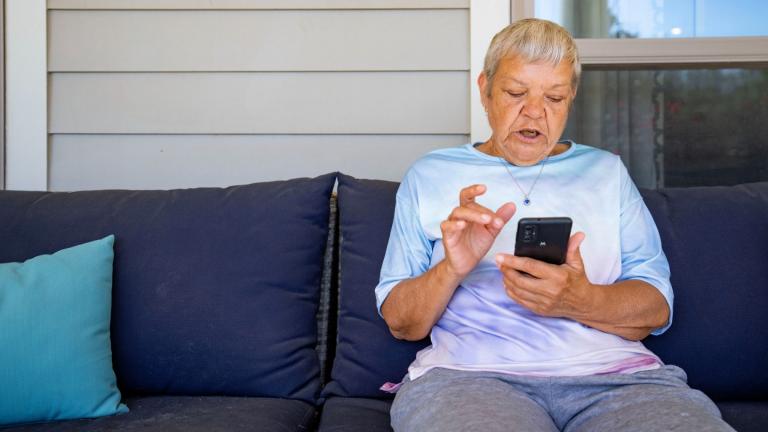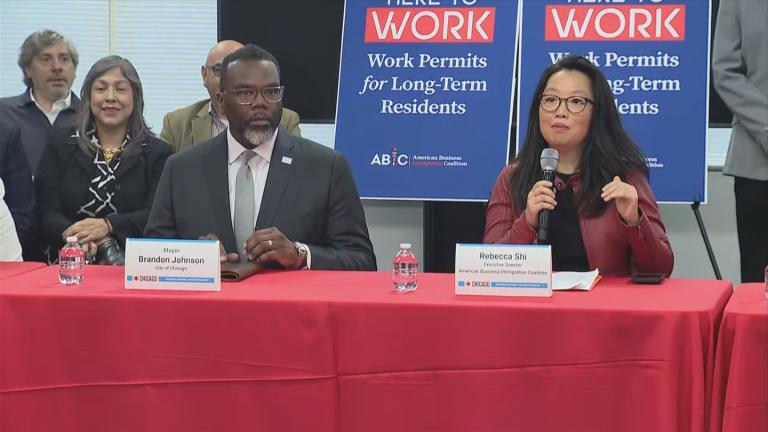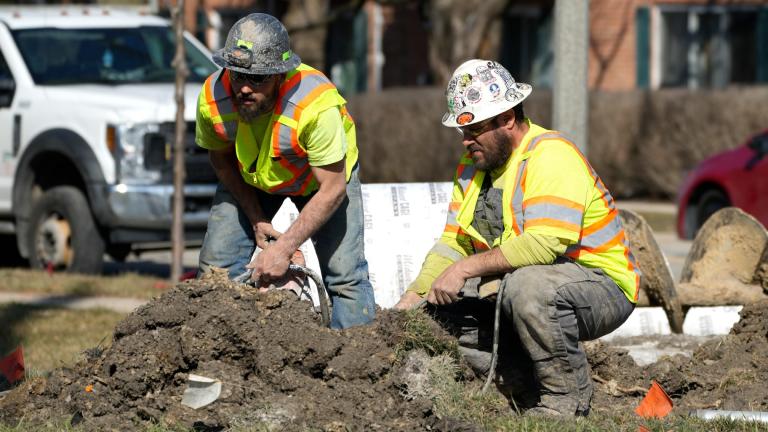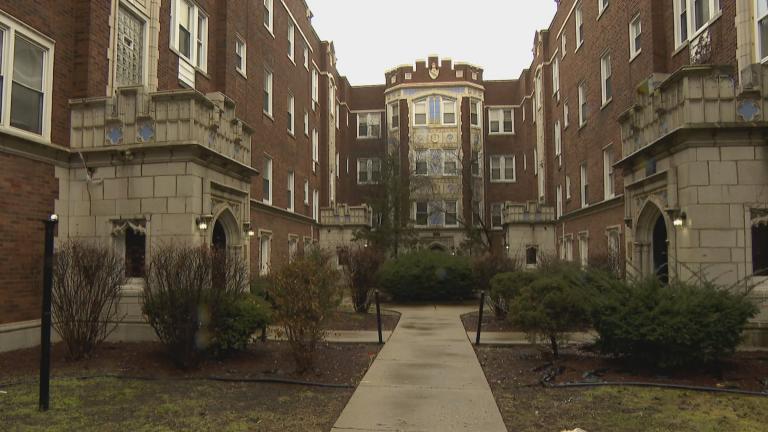This month, the University of Chicago is hosting its third “Urban October” to focus on the issue of improving urban life for the billions of people that live in cities around the world in the wake of a pandemic that’s exposed inequities around the globe and in Chicago.
The goal is to help focus attention on the work that is being done to transform the cities of the future, and Chicago in particular, in a post-COVID-19 and climate change-challenged world.
Even prior to the pandemic, it’s telling that when employment was low and the stock market was soaring that many Americans were struggling to get by, according to former 47th Ward Ald. Ameya Pawar who is now a senior advisor at UChicago’s Inclusive Economy Lab.
“In 2018, we had historically low unemployment nationally. The stock market was going gangbusters. And yet only four in 10 Americans had $400 in the bank,” he said. “A majority lived from check to check and poverty was increasing,”
Perhaps counterintuitively, Pawar notes that poverty in the U.S. has decreased during a global pandemic, “and that’s because he government has provided unprecedented help.”
“What I think is important that undergirds all of this is the fundamental orthodoxy – the economic orthodoxy – which has guided American public policy for the last 50 years was laid bare,” says Pawar. “It wasn’t just concurrent crises of poverty, inequality, the wealth gap and climate. It’s the underlying logic of the last 50 years. Neoliberalism got laid bare. And so my point is that if you want to build back better we need new economic assumptions, a new economic orthodoxy.”
Pawar notes that vast swathes of Chicago have little to no access to capital, and that without access to capital you are going to have “glaring gaps.”
“And so it seems to me that we are always trying to make up for a lack of investment and access to capital in disinvested communities with everything but access to capital,” he said.
The philanthropic model is part of the problem, according to Pawar, “because it allows a few people who have benefited from inequality to determine what cities are able to do to solve the problems created by inequality,” he said. “The people who drive inequality are the ones making decisions about what the city can do about that inequality.”
One obvious impact of the pandemic has been to acceleration of the trend of more people working from home and fewer workers in offices downtown.
That’s a potentially worrying trend, according to Luis Bettencourt, director of UChicago’s Mansueto Institute for Global Innovation, who says that most American cities are typically tied together by a central business district. He says that if that connection begins to break down because fewer and fewer people are working downtown “it’s very problematic.”
Bettencourt thinks that after the pandemic recedes, some sectors – particularly creative jobs that benefit from close collaboration – are likely to spur a return to the office for some workers. But he also thinks that some companies will think that having people work from home is an opportunity to save on office costs.
Speaking to the enormous inequities the pandemic has highlighted and exposed, Bettencourt says that in order for cities to continue to thrive they must work for all residents.
“In Chicago, I don’t want to necessarily say how well we did or how poorly we did,” said Bettencourt. “But obviously we could do better. And part of the issue is that Chicago is a very unequal city, and I think it’s a place where it’s very hard to be poor because of the history of segregation and poverty, but also because a lot of the supporting services … are very remedial.”
He notes that for a city to operate efficiently and create economic opportunity a network of complex functions must come together and work well.
“And it means in particular that people who live in cities, they need support,” said Bettencourt. “They need good services, good housing, good environments in which they can be healthy. They need conflict resolution. They need all kinds of things that allows them to interact with each other. And through those interactions create essentially the economic value (and the civic life of the city). … That is really what cities are about,” Bettencourt said. “That’s why they exist.”
One profound change that all cities will have to deal with going forward is the impact of climate change. While that impact may be more obvious in some areas than others – particularly coastal areas – the reality is that all cities will be challenged by the changing climate.
“We are already living through some of the impacts of climate change,” said Sabina Shaikh, director of UChicago’s program on the global environment. “So, it’s not something that we should keep thinking about as way off in an uncertain future. Obviously, these impacts are much more visible in some places than others. In Chicago, we don’t see the coastal surges and the wildfires and what’s happening in other parts of the country or world. But we are already living with the predictions – which are more extreme and intense rain and heat events – and that’s going to continue to become more frequent.”
Cities will have to plan and invest to become more resilient to the impacts of climate change says Shaikh, and that while we may have technological solutions, “we still have to collectively have the will to do it.”
Shaikh says our limits in working together to put the pandemic behind us is a good example of what happens when that collective will is not there.
“Due to incredible scientific and public health research, we had a lot of information on how to manage COVID, but the behavioral dimension to it has been so challenging,” said Shaikh. “And I think that’s similar with respect to slowing environmental degradation, but also in terms of building our resilience to climate change.”
Part of that process of adaptation will require a fundamental rethinking about urbanization and land use, according to Shaikh.
“We were really good at engineering the way we wanted to live but this also created problems by developing places that maybe could have been preserved for coastal protection or for wildfire protection. So, in modern society, if we didn’t have water where we wanted it, we engineered it to come to us,” said Shaikh. “I think we need to rethink that a little bit and try to restore the ecosystems that offer the kind of natural protection needed to withstand certain climate effects.”
While the impact of climate change is global, Shaikh notes that the impacts can be very localized.
“You might think the weather in Chicago is the weather in Chicago, but the effects of climate change can be borne very differently from one neighborhood to another due to historical policies, land use and the environmental exposures that are results of the economic system, the political system and historical discriminatory practices,” said Shaikh.
The biggest threat presented by climate change for Chicagoans is likely to be more intense flooding and heatwaves. Part of the solution in terms of creating greater resilience to such events will be more green space and more permeable paved surfaces, says Shaikh.
“The important thing is that we need to have more resilience to these conditions. That is going to require investment at every level from – from a particular property or home to the city and global scale, starting with investing in those that are most vulnerable due to existing conditions,” Shaikh said.
And ultimately, successful cities have constantly had to reinvent themselves and evolve to remain relevant and draw people.
“The truth is that we are here for reasons that are important,” Bettencourt said. “Cities open up possibilities and opportunities in life in so many different ways. They welcome diversity. They create collaboration. They’re the places where democracy was invented. So these are processes. ... And cities have been (evolving and adapting to change) since the beginning, and they will continue to do that short of something truly catastrophic. So I am very optimistic. I think that these noisy dynamics that we often associate with being a problem in cities is normal.”
Note: This story will be updated with video.








